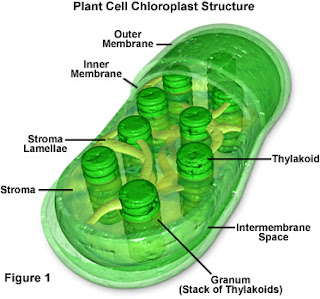Robert Hooke (1665) – examined a thin section of cork under the microscope and saw boxlike structure which were the outermost coverings of plant cell later called as cell wall.
Robert Brown (1830) – found the central part of the cell called the nucleus
Matthias Schleiden and Theodore Schwann found out that all living things are made up of cells
Cell Theory states that:
- the cell is the basic unit of structure and function in living organisms.
- plants and animals are made up of one or more cells.
- existing cells give rise to new cells
PLANT CELL
General Parts of the Cell:
- nucleus – central part of the cell
nucleolus – contains the chromosomes; made up of DNA material and proteins which carry the hereditary information; synthesizes the ribosomes
nuclear membrane – separates the nucleus from the other parts of the cell
- cytoplasm – semi-fluid substance in which the organelles are suspended
- plasma membrane or cell membrane
v continuous double-layered membrane enclosing the cell
v made up of phospholipids molecules with proteins that are embedded within or located on the surface of the membrane
v selectively permeable or semi-permeable
cell wall – made up of cellulose which is responsible for making the plant cells rigid and sturdy
Cell organelles
· modify proteins that are synthesized and packaged in endoplasmic reticulum
· facilitates transport of materials like glycoproteins
· smooth endoplasmic reticulum – branching canals and act as calcium ions reservoir in skeletal muscles
· rough endoplasmic reticulum – synthesize and packaged proteins which are sent to be synthesized in the golgi apparatus
· associated with ribosomes
· “powerhouse of the cell”
· This is where chemical energy of food such as glucose is converted into energy in the form of ATP (Adenosine triphosphate)
· “suicide bags” of the cell”
· Digest complex nutrients and broken down organelles
a.) microtubules – skeletons of cells; help provides anchorage for organelles in the cell
b.) intermediate filaments – give support to the cytoplasm of cells; detect some disaorders
c.) microfilaments – muscles of cells; give shape to the cell and are involved in the construction of cytoplasm during mitosis
Unicellular – single-celled organisms and can survive in their own
Multicellular – different kinds of cells exists; all cells carry on the basic activities of life; each kind of cell often specializes in a particular function in addition to itas basic activities.
Colonial – made up of similar cells; cells are organized into working unit different from individual cells
Prokaryotes
- organisms where the cells have no true nucleus and lack some organelles
- nuclear materials are not enclosed by a nuclear membrane
- the DNA is a single circular structure (plasmid)
- do not have mitochondria, endoplasmic reticulum, lysosomes, vacuoles and golgi bodies; ribosomes are small
- examples are bacteria and blue-green algae
Eukaryotes
- have well-defined nuclear membrane and distinct nucleus
- multiple chromosomes are present and can be seen during cell division
- membrane-bound organelles can be found
- division of labor among organelles enabled them to be multicellular and grow larger than prokaryotes













No comments:
Post a Comment